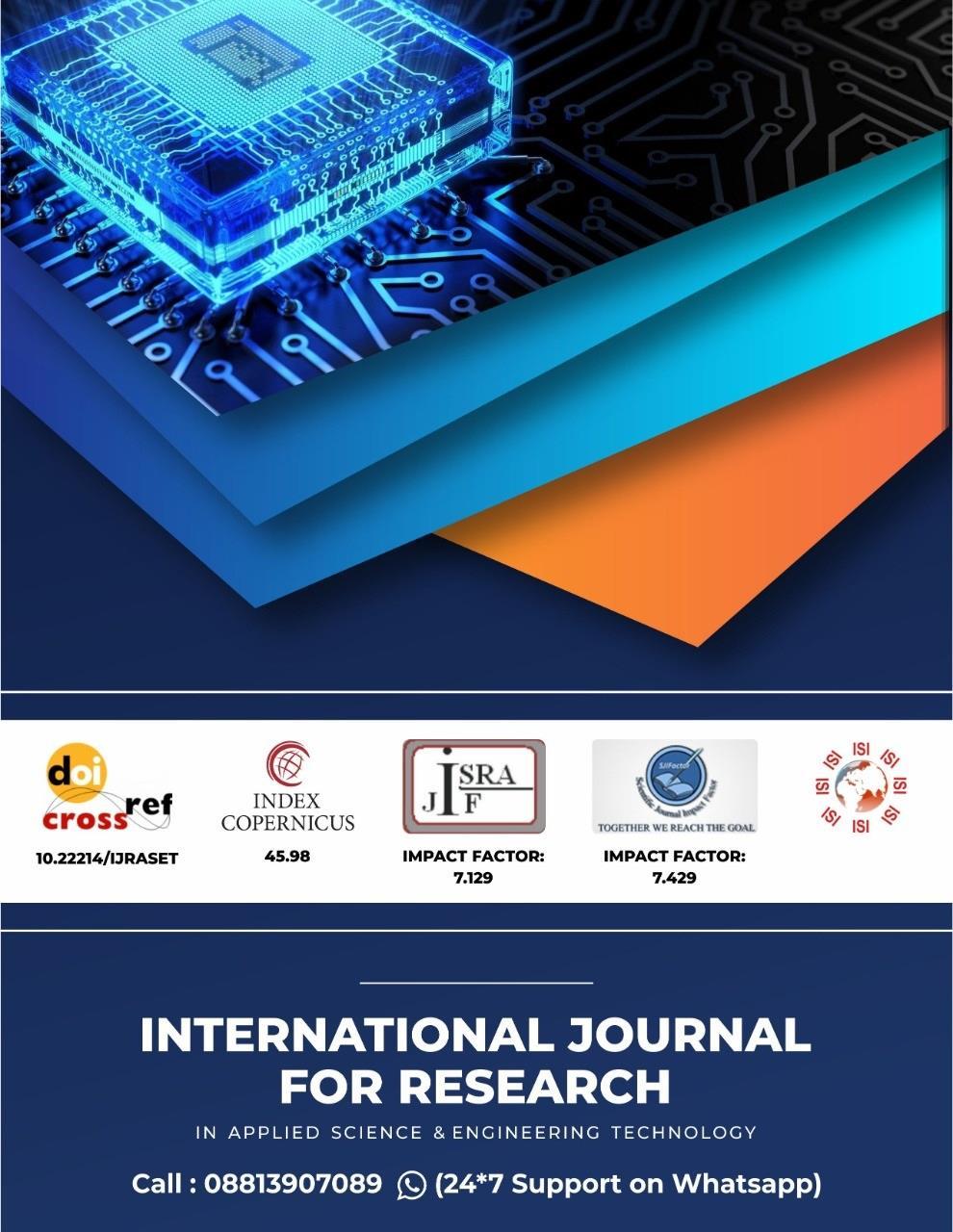https://doi.org/10.22214/ijraset.2023.49925
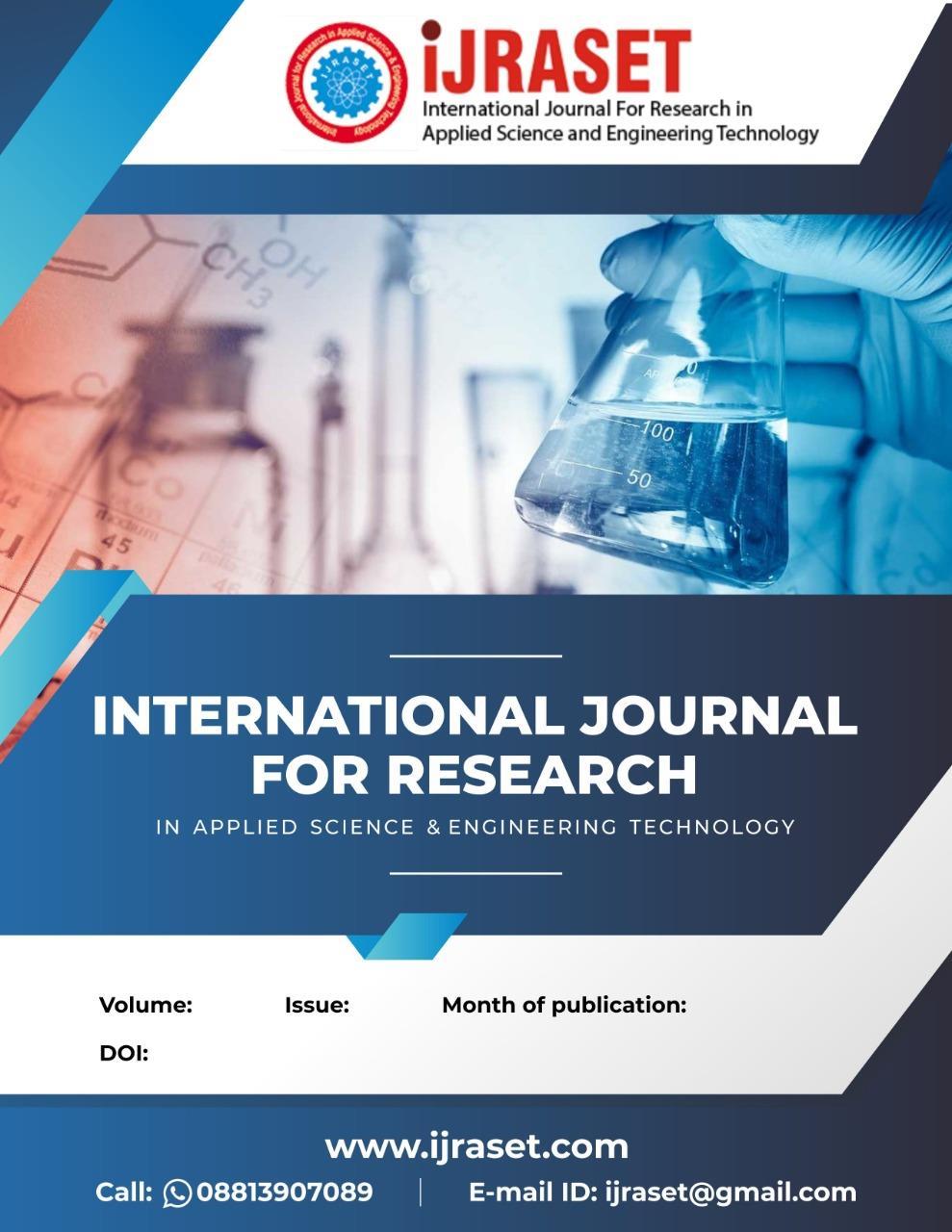
ISSN: 2321-9653; IC Value: 45.98; SJ Impact Factor: 7.538
Volume 11 Issue III Mar 2023- Available at www.ijraset.com

https://doi.org/10.22214/ijraset.2023.49925

ISSN: 2321-9653; IC Value: 45.98; SJ Impact Factor: 7.538
Volume 11 Issue III Mar 2023- Available at www.ijraset.com
Shana Parvin1 , Minu Mumthaz2
1Post graduate student (M. Tech Structural Engineering), APJ Abdul Kalam Technological University, Vedavyasa Institute of Technology, Kerala, India

2Assistant Professor, Vedavyasa Institute of Technology, Kerala, India
Abstract: Metamaterials (MMs) are manmade materials which are are actually a Polymer nano material. Metamaterials (MMs) are high energy absorbing and lightweight materials which can be used in structural occupation as a protective system. Now a days honeycomb panels of aluminium panels are used for reducing the collision mitigation which are very expensive, poor plasticity and it posse’s complex pattern, as compared to metamaterial panels. In this study, innovative cost-effective metamaterial (MMs) is used in structural occupation and use it as controlling a mitigation which is caused by vehicle collision. The primary objective of this investigation is to study the impact performance of the metamaterial (MMs) panel under various parameters. It is assumed that the proposed design is useful for controlling the severity of vehicle collision on structural member. The complete studies have been carried out using a finite element analysis in ANSYS software.
Keywords: ANSYS, Metamaterial, Honeycomb panels, polymer nano materials
Metamaterial are artificially engineered materials come up with customized properties in a material that originally does not exist Metamaterials are widely used in structural occupation as a damper, sensor detection, optical fibre etc. Metamaterials IS made from nano sized particles. Different arrangements of cellular structure will give different properties The significant characteristics of metamaterial panel is the light weight and high energy absorption capacity. These properties bring very importance in construction and structural environment Medha Shruti et al [1] investigated compressive simulation of three types of basic metamaterial (Hexagon, Diamond, Auxetic) and their hybrids (Auxetic-Diamond, Auxetic-Hexagon, Diamond-hexagon) with Ansys simulation software. All the six metamaterials simulated by poly lactic acid (PLA) materials. The result showed that for auxetic-diamond hybrid structure higher energy absorption of 40 mJ was noted, and lower deformation is obtained for hexagonal structure as compared to other models. Xueyan Chen [2] They design a stretching-dominated mechanical metamaterial that can absorb very large energies while retaining a low density. Result shows that a new class of shell lattice (SL) metamaterials has the best mechanical properties for shock absorption they are ultra stiff, ultra strong, and possess high specific energy absorption at low relative density.
To investigate the impact performance of metametal energy absorbing devices
1) Materials (PLA & LYC)
2) Thickness of web and cover
The main goal of this project is to study the impact performance of the metamaterial panel under various parameters and to investigate the performance of the column with and without the protection The study's primary goal is to use the ANSYS WORKBENCH software to compare the performance and determine the energy absorption capacity of metametal energy absorption devices with different materials and parameter to control the collision mitigation on columns.
A hexagonal cellular structure metamaterial panel was modelled using ANSYS Workbench. The metamaterial panel of hexagonal cellular structure is made of Poly lactic acid (PLA) is shown in fig 1.

ISSN: 2321-9653; IC Value: 45.98; SJ Impact Factor: 7.538
Volume 11 Issue III Mar 2023- Available at www.ijraset.com
Which has different web and cover thickness.in this work 10 models are there, similarly 10 models of hexagonal cellular structure metamaterial panel of low yield carbon (LYC) are shown in fig .2 Poly lactic acid (PLA) has Density of 1270 kg/m3, Youngs modulus of 3500Mpa, Poisson’s ratio of 0.36719, Shear modulus of 1280 Mpa and yield strength of 0.07GPa .Low yield carbon has Density of 1270kg/m3,Youngs modulus of 20000Mpa ,Poisson’s ratio 0.3,shear modulus of 76923 Mpa and Yield strength of 0.07 GPa .


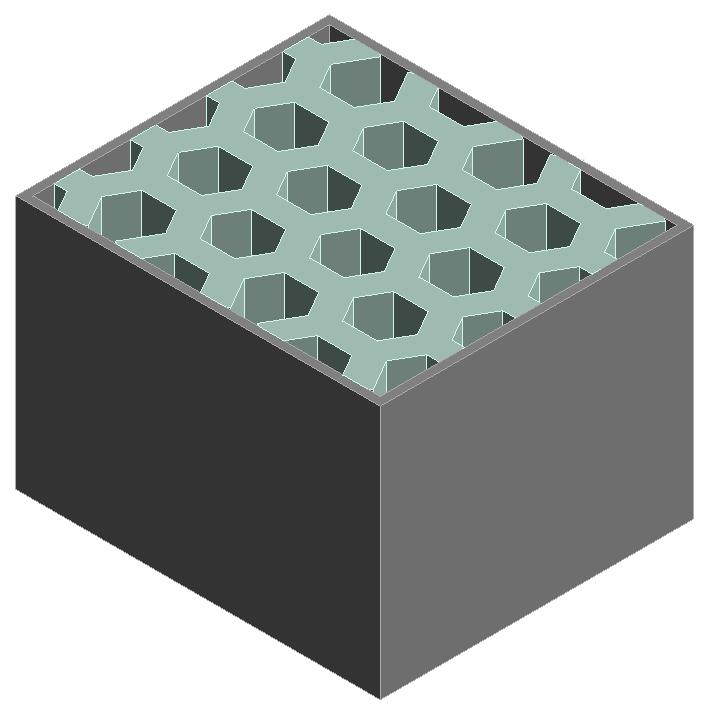


Fig-1 : Modelled 3d structure of hexagonal structure of a) cover of 5mm & web of 5mm ; b) cover of 5mm & web of 10mm ; c) cover of 5mm & web of 15mm ; d) cover of 10mm & web of 5mm ; e) cover of 10mm & web of 10mm ; f) cover of 10mm & web of 15mm

B. Boundary conditions and loading
The bottom end of the metamaterial panel is fixed to the one side of the column and other end of the panel kept free where the impactor hits at a velocity of 8330mm/s

ISSN: 2321-9653; IC Value: 45.98; SJ Impact Factor: 7.538
Volume 11 Issue III Mar 2023- Available at www.ijraset.com
The model is subjected to impact testing using explicit dynamics and Fig 2 and Fig 3 represents the deformation of the models

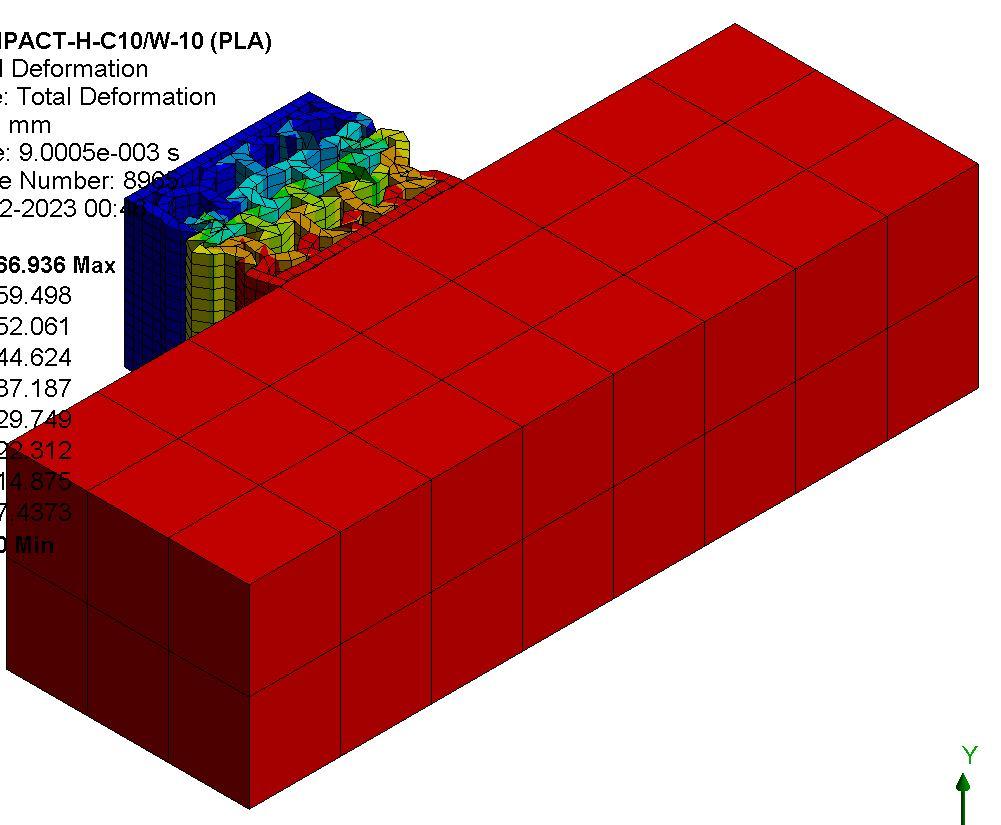
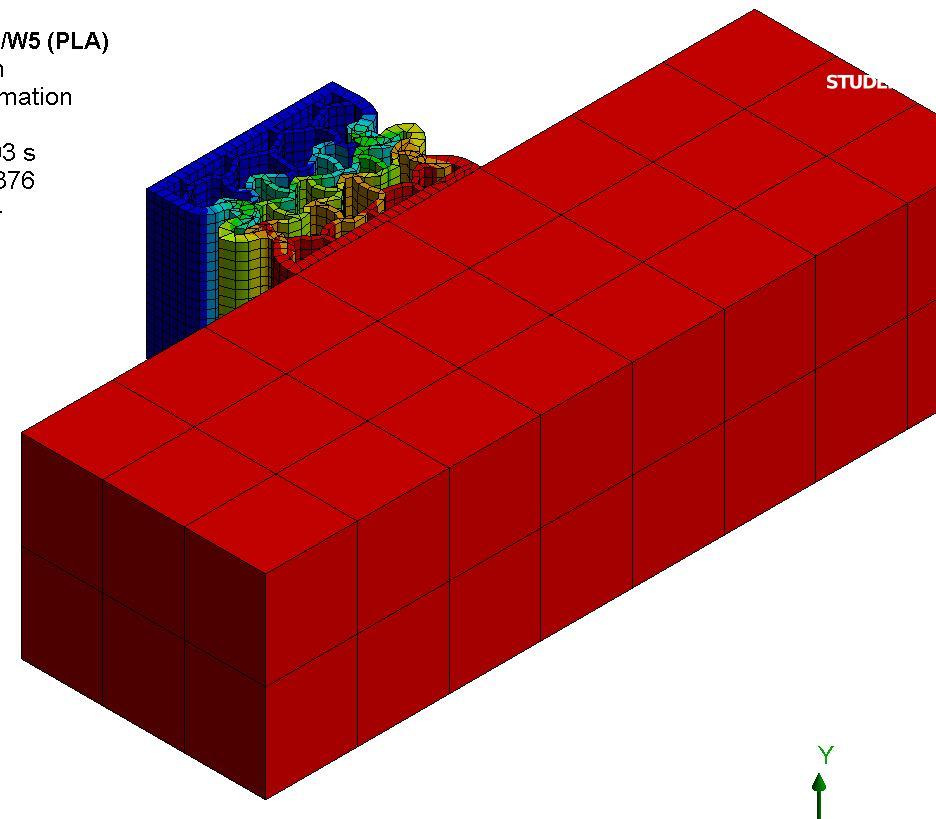
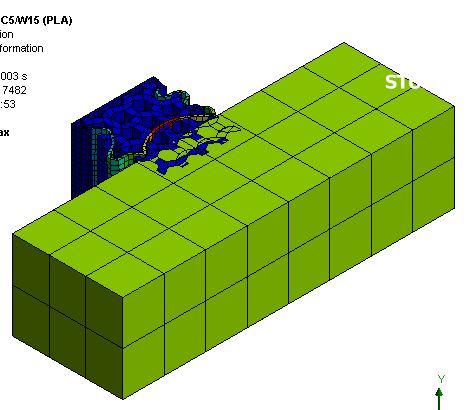
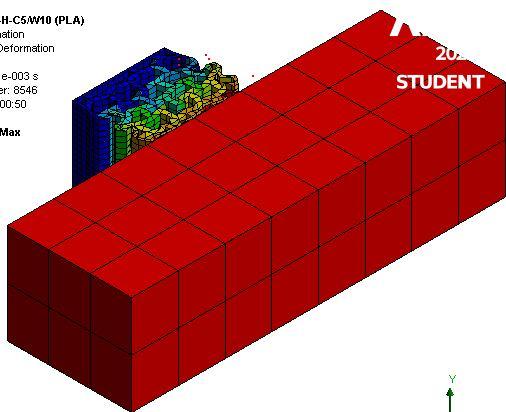
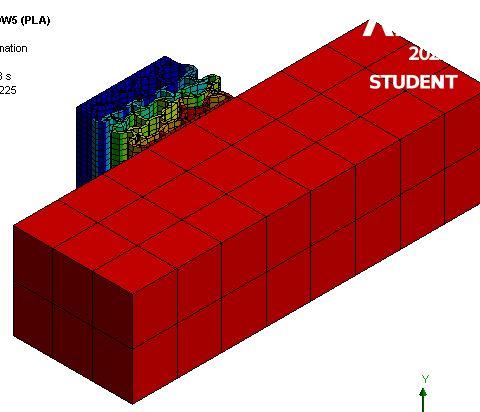

ISSN: 2321-9653; IC Value: 45.98; SJ Impact Factor: 7.538
Volume 11 Issue III Mar 2023- Available at www.ijraset.com
Fig-2 : Deformed 3d structure of hexagonal structure of Poly lactic acid (PLA) material a) cover of 5mm & web of 5mm ; b) cover of 5mm & web of 10mm ; c) cover of 5mm & web of 15mm ; d) cover of 10mm & web of 5mm ; e) cover of 10mm & web of 10mm ; f) cover of 10mm & web of 15mm
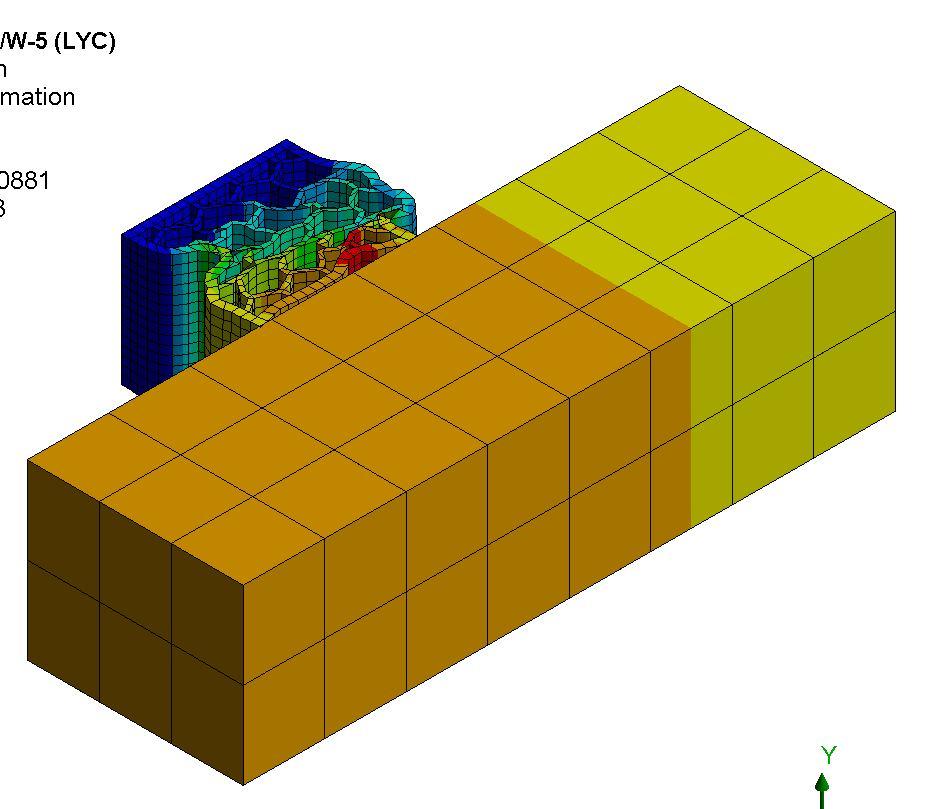
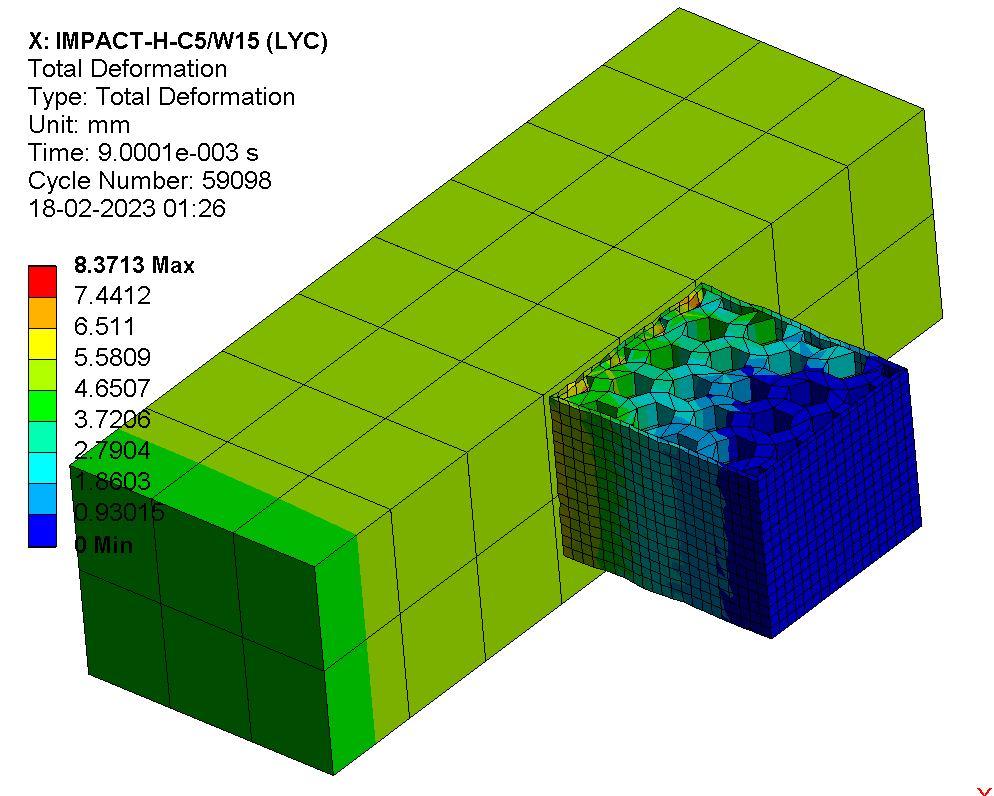
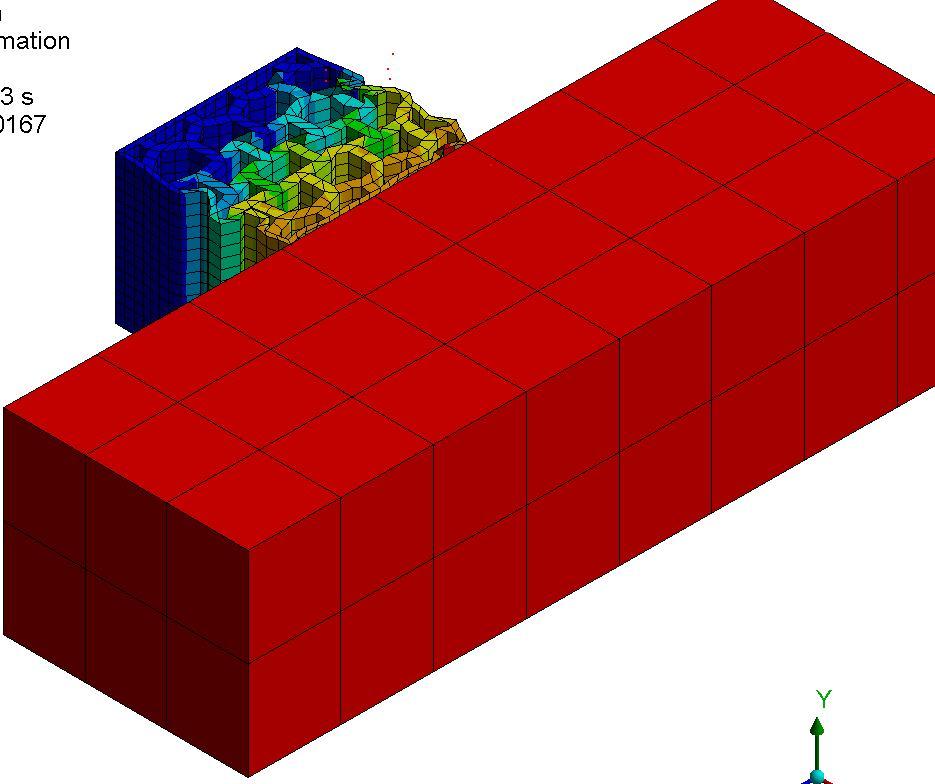


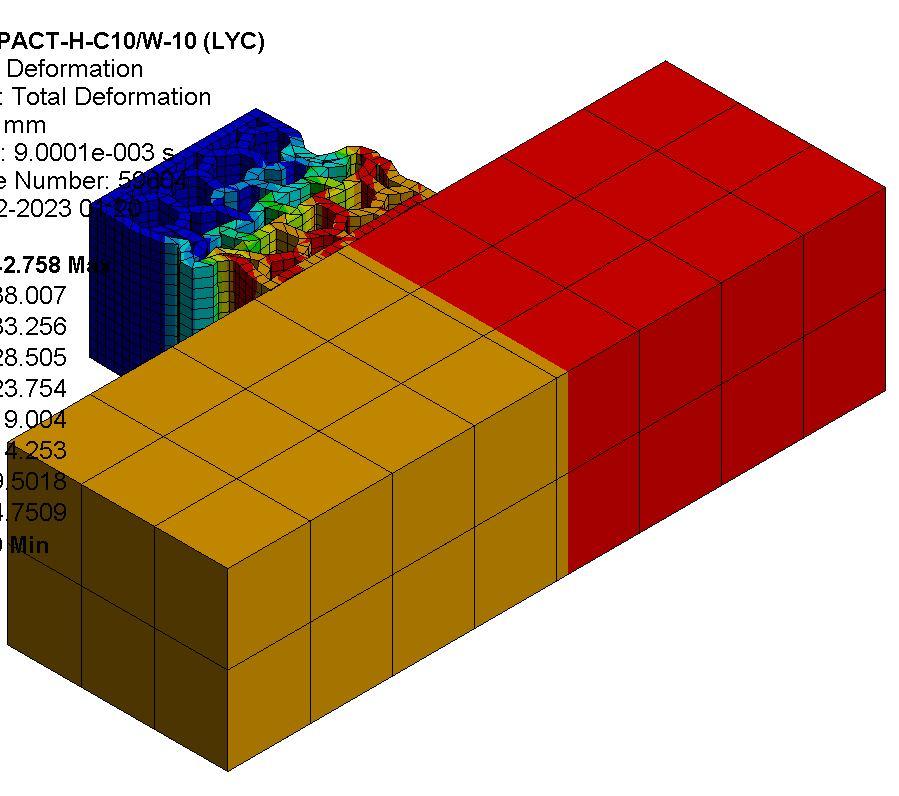

ISSN: 2321-9653; IC Value: 45.98; SJ Impact Factor: 7.538
Volume 11 Issue III Mar 2023- Available at www.ijraset.com

ISSN: 2321-9653; IC Value: 45.98; SJ Impact Factor: 7.538
at www.ijraset.com
A metamaterial panel of hexagonal cellular structure is designed. Metamaterial panel of two different materials and various thickness of cover and web are modelled and they are allowed to impact testing. From the study of impact testing on Metamaterial panel with Poly lactic acid (PLA) and different parameters, it is observed that Model with cover thickness 5mm and web thickness 10mm undergoes more deformation, this will not take impact force, i.e., impact resistance is more and has more energy absorption and Model with cover thickness 10mm and web thickness 15mm undergoes lesser deformation, this takes more impact force. More deformable and model which do not bounce back will be considered as effective model. Metamaterial panel with Low yield carbon (LYC) and different parameters, it is observed that Model with cover thickness 10mm and web thickness 10mm shows deformation and this model will take lesser energy, so damage will be less. Model with cover thickness 10mm and web thickness 15mm & Model with cover thickness 5mm and web thickness 15mm undergoes lesser deformation, this model is taking impact force. Other models undergo more deformation, where models are not taking the impact force
[1] Medha Shruti, Namana Sri Hemanth, Nitesh Dhar Badgayan, Santosh Kumar Sahu. (2021) “Compressive behavior of auxetic structural metamaterial for lightweight construction using ANSYS static structural analysis” Journal of Materials Today: Proceedings 38 (2021) 12–17
[2] Qingxiang Ji, Jianzheng Wei, Huifeng Tan, Jianxin Yu, Vincent Laude, Muamer Kadic,The Analysis of Directional Time Series: Applications to Wind Speed and Direction, ser. Lecture Notes in Statistics. Berlin, Germany: Springer, 1989, vol. 61.
[3] Nejc Novak , Lovre Krstulović-Opara, Zoran Ren, Matej Vesenjak,(2019) “Mechanical properties of hybrid metamaterial with auxetic chiral cellular structure and silicon filler” Composite Structures (2019)
[4] Santosh Kumar Sahu, Nitesh Dhar Badgayan, P.S. Rama Sreekanth (2019) “Numerical investigation on the effect of wall thickness on quasistatic crushing properties of nylon honeycomb structure” Materials Today: Proceedings
[5] Ai-Zhu Zhu(2018) “Lateral impact response of rectangular hollow and partially concrete-filled steel tubular columns” Journal of Constructional Steel Research 147 257–276
[6] Hyungoo Kang, Jinkoo Kim (2020) “Damage Mitigation of a Steel Column Subjected to Automobile Collision Using a Honeycomb Panel” J. Perform. Constr. Facil., 2020, 34(1): 04019107
